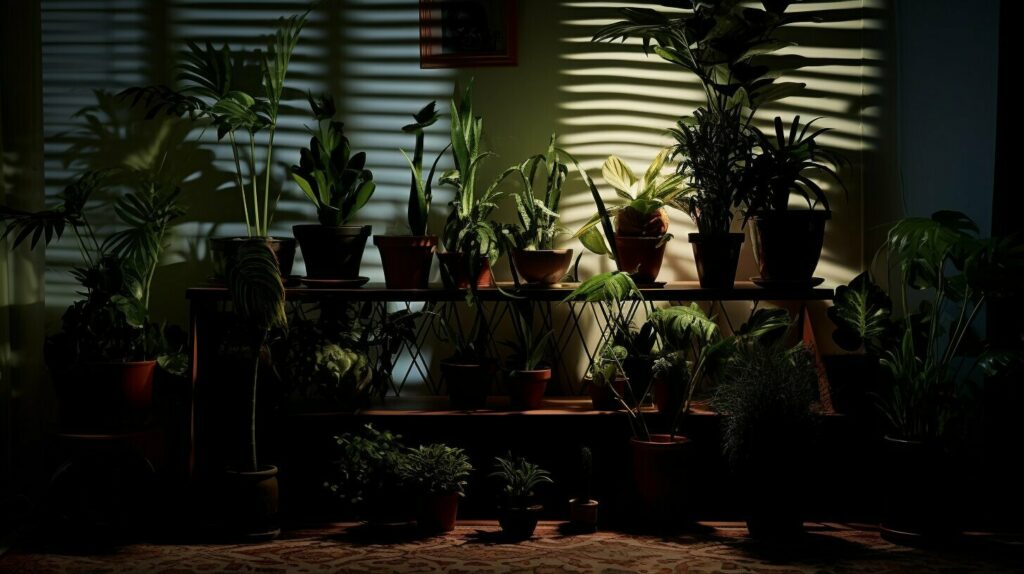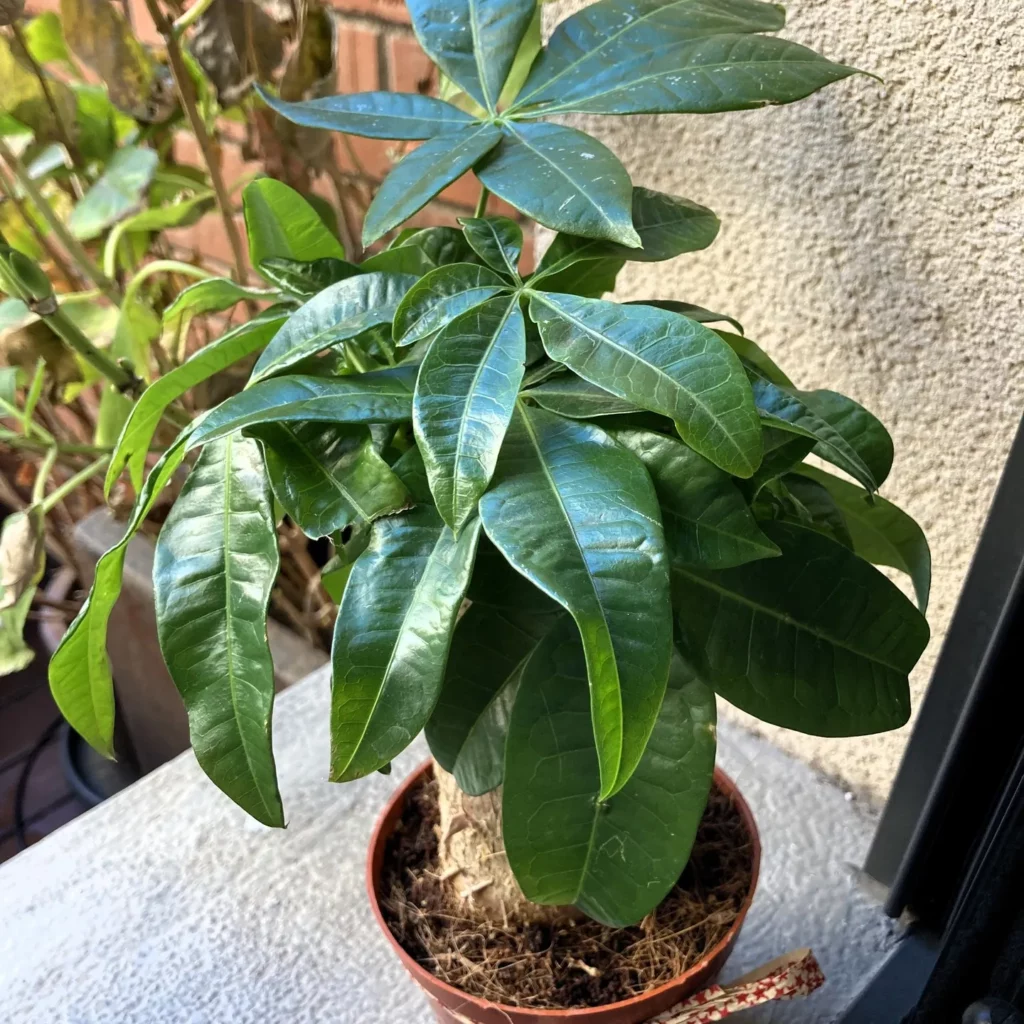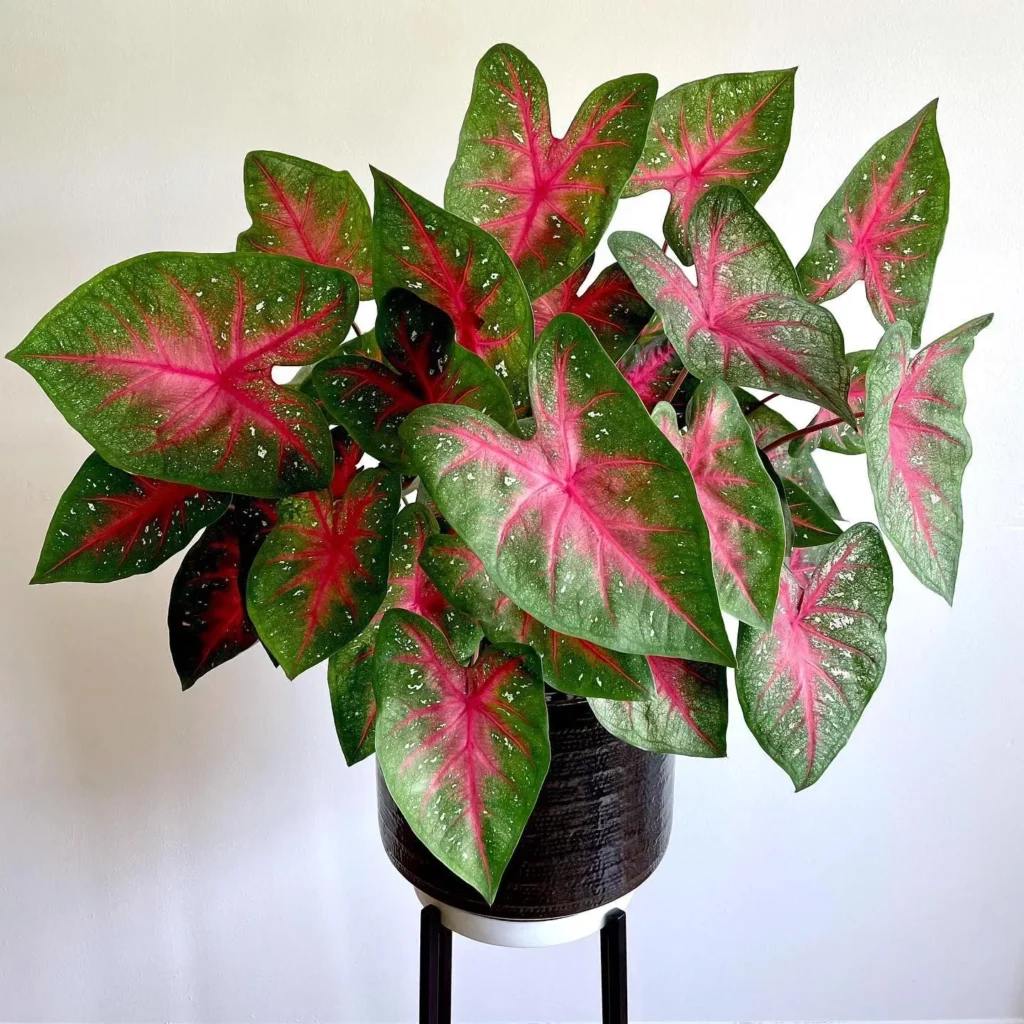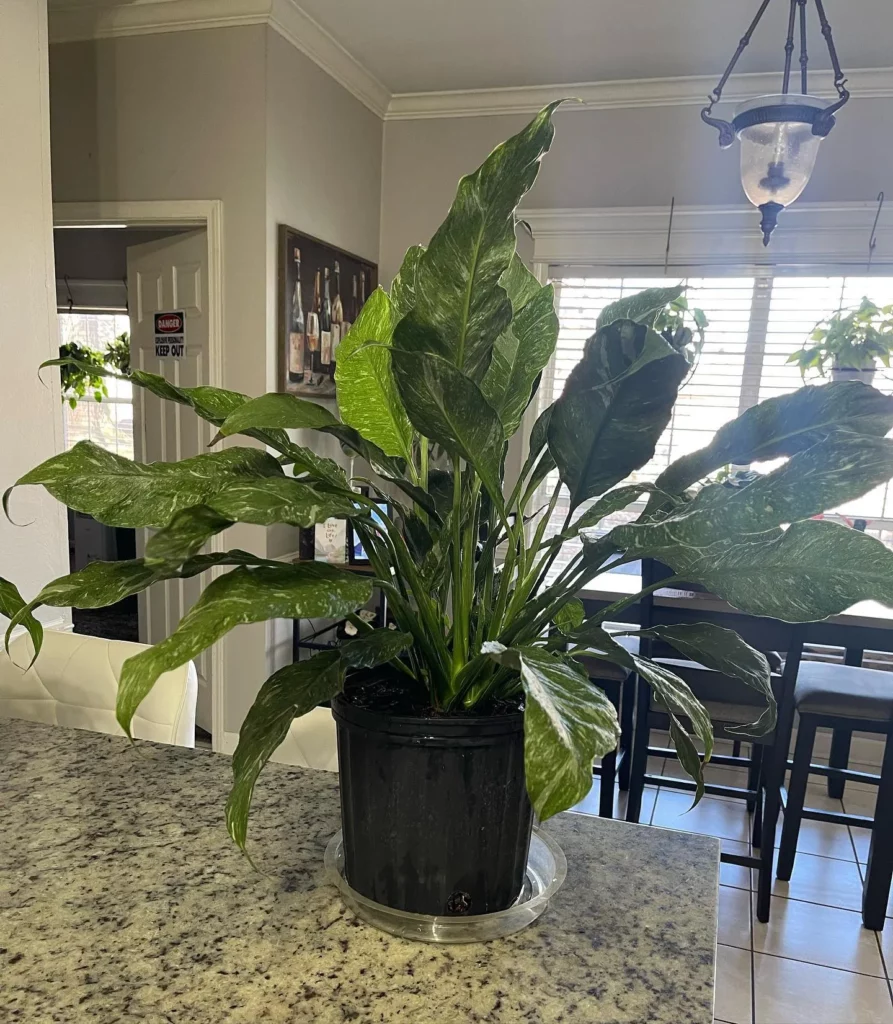👋🌿📝 Toxic Houseplants Alert! While greenery 🌱 brightens up your home 🏡, beware—some are harmful to humans & pets🚨 🐾
In this guide, we’ll spotlight 11 risky plants 🚫 and offer safety tips 🛡️✨ Learn to identify these hazardous greens and adopt measures to keep your living spaces risk-free. 🛡️Join me in this critical exploration to safeguard your loved ones and furry companions from these silent threats.
Let’s uncover these risky greens! 🛡️🌱✅🌸👪
Jacob Fox: Dieffenbachia – The Dumb Cane with Dangerous Consequences
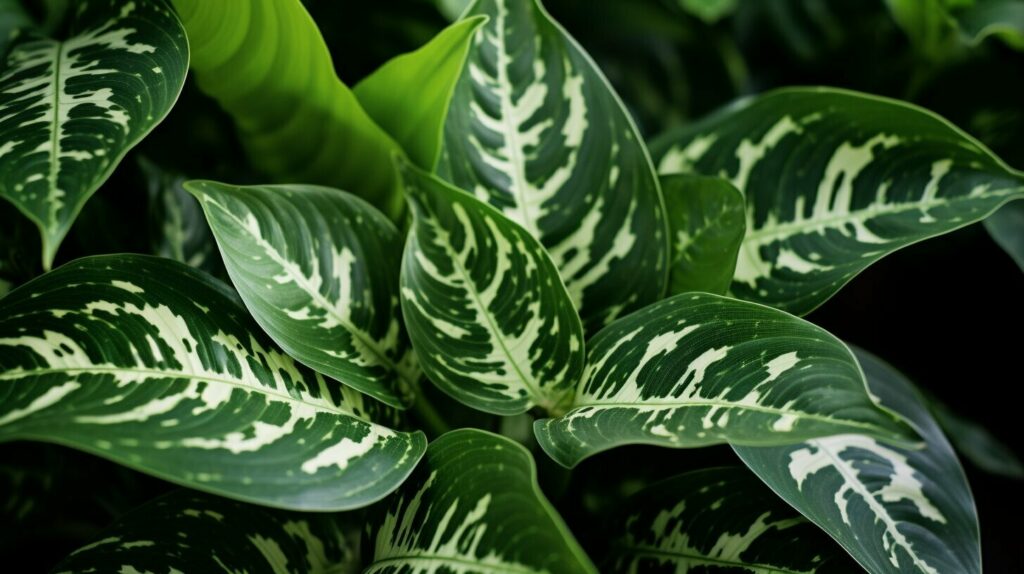
Dieffenbachia, also known as Dumb Cane, is a popular houseplant that adds a touch of tropical beauty to any indoor space. However, this plant has earned its nickname for a reason. The sap of Dieffenbachia contains chemicals that can cause burning and swelling of the tongue, potentially blocking the airway and leading to a life-threatening situation. It’s important to handle this plant with caution and keep it out of reach of children and pets to ensure their safety.
To mitigate the risks associated with Dieffenbachia, consider placing it in a safe location, such as on a high shelf or using plant stands to elevate it off the ground. This will prevent curious children and pets from accessing the plant and inadvertently coming into contact with its toxic sap. By taking these simple precautions, you can enjoy the beauty of Dieffenbachia while keeping your family safe.
Recognizing Dieffenbachia:
- Large, colorful leaves
- Variegated patterns on the leaves
- Thick stems
Jacob Fox: English Ivy – Beautiful but Beware the Berries
English Ivy is a popular vine that adds an elegant touch to any indoor space. Its lush leaves and cascading branches make it a desirable houseplant for many. However, it’s important to be aware that English Ivy is considered a poisonous houseplant, especially when it comes to its berries.
The berries of English Ivy, although visually appealing, can cause a range of symptoms if ingested. These symptoms may include skin irritation, burning throat, fever, and rash. While it takes a large quantity of the plant or berries to cause serious harm, it’s crucial to keep English Ivy in a location where it is out of reach, such as high shelves or hanging baskets. By practicing responsible plant placement, you can ensure the safety of your children and pets.
Easter Lily – A Beautiful Flower to Beware of for Pet Safety
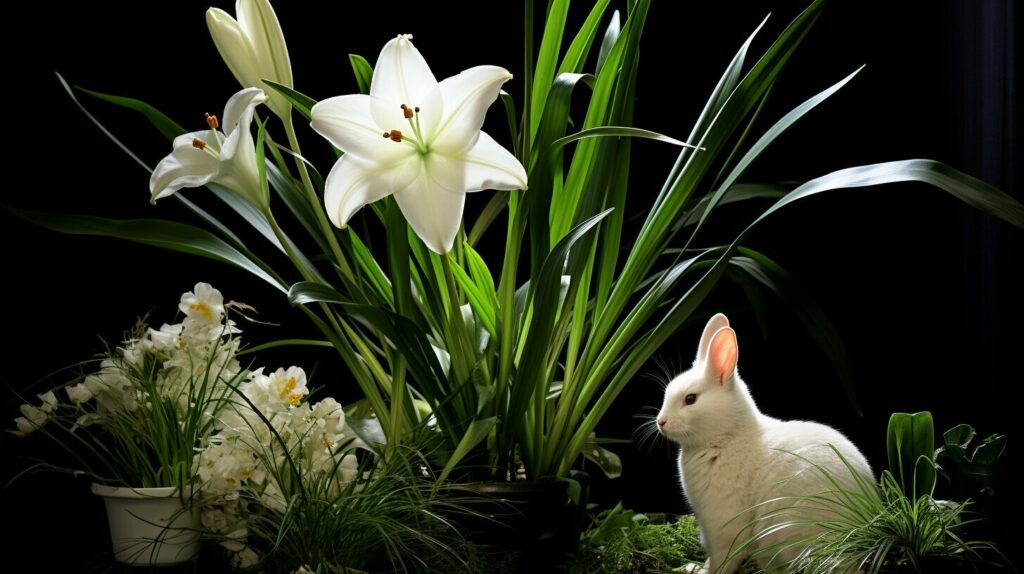
When we think of Easter, one of the first images that come to mind is the beautiful Easter Lily. Its pure white flowers and delightful fragrance make it a popular choice for holiday decorations and gifts. However, what many people don’t realize is that Easter lilies can be extremely toxic to cats.
If a cat ingests even a small part of an Easter Lily, it can quickly lead to severe kidney failure. The toxins within the plant can cause vomiting, loss of appetite, and increased thirst, which are early signs of poisoning. Without prompt medical attention, the consequences can be fatal.
Poisonous Houseplants: The Risk of Peace Lilies and Ensuring Pet and Child Safety
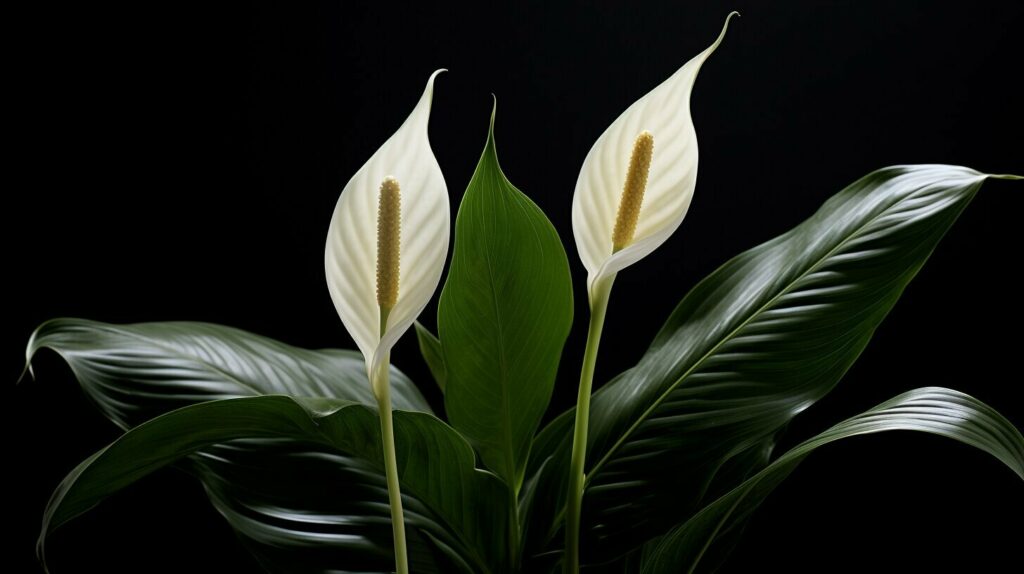
When it comes to beautiful houseplants, peace lilies are a popular choice. With their dark green leaves and elegant white flowers, they can add a touch of serenity to any space. However, it’s important to be aware that peace lilies are poisonous if consumed in large quantities. This is especially concerning if you have curious pets or young children in your home.
The toxins in peace lilies can cause oral irritation, swelling of the mouth and throat, excessive drooling, and difficulty swallowing. To ensure the safety of your loved ones, it’s advisable to keep peace lilies out of their reach. Placing them on high shelves or using hanging baskets can prevent accidental ingestion and provide peace of mind.
If you suspect a pet or child has been exposed to a peace lily:
- Wash the affected area with soap and water.
- Remove any clothing that may have come into contact with the plant.
- Monitor for any symptoms of oral irritation or difficulty breathing.
- Contact a medical professional or call poison control if necessary.
Hyacinths and Daffodils – Spring Bulbs with Hidden Dangers

Springtime brings an abundance of blooming flowers, and two popular choices for indoor gardens are hyacinths and daffodils. These vibrant spring bulbs can add a burst of color and fragrance to your home. However, it’s important to be aware that these seemingly harmless plants can be toxic if ingested by humans or pets. The bulbs of hyacinths and daffodils contain toxins that can cause severe stomach problems, high blood pressure, irregular heartbeat, and in some cases, even death.
When forced for indoor blooms, hyacinth and daffodil bulbs can be mistaken for shallots or onions, leading to accidental ingestion. To prevent any potential harm, it is crucial to keep these plants out of reach, especially from curious children and pets. Placing them on high counters or shelves where they are inaccessible is a recommended safety measure. Another option is to grow them in a terrarium, where they can be contained and pose no risk to your loved ones.
How to Identify Hyacinths and Daffodils:
- Hyacinths: These plants produce brightly colored, fragrant flowers that grow on stalks with broad, strap-like leaves. The flowers are usually tightly packed together in a cluster on top of the stalk.
- Daffodils: Known for their trumpet-shaped blooms, daffodils have long, slender leaves that emerge from the base of the plant. The flowers can be yellow, white, or a combination of both colors.
Dean Schoeppner: Philodendrons – Beautiful Vines with Hidden Dangers
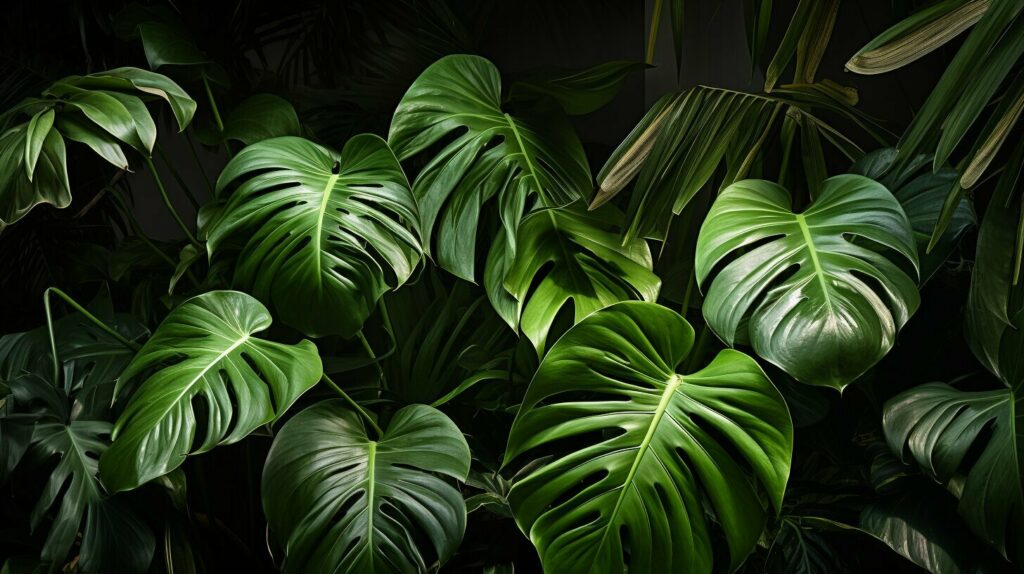
Philodendrons are widely used as indoor plants due to their attractive foliage and easy maintenance. However, it is important to note that philodendrons are toxic to both humans and pets. Ingesting these plants can cause burning and swelling of the lips, tongue, and throat, along with vomiting and diarrhea. Philodendrons have a trailing habit, similar to English Ivy, so it’s crucial to keep them far from the floor to prevent accidental ingestion.
To ensure the safety of your family, consider placing philodendrons in elevated areas such as high shelves or hanging baskets. This will help keep them out of reach of curious children and pets. Additionally, it is important to educate your family members about the potential dangers of these plants and discourage them from touching or ingesting any part of the philodendron.
Recommended Safety Measures for Philodendrons:
- Place philodendrons in high locations, such as on top of shelves or in hanging baskets
- Keep philodendrons away from the floor to prevent accidental ingestion
- Supervise young children and pets when around philodendrons
- Educate your family members about the potential dangers of philodendrons and discourage them from touching or ingesting the plant
Pothos: A Beautiful Addition to Your Home, But Beware of Its Toxicity
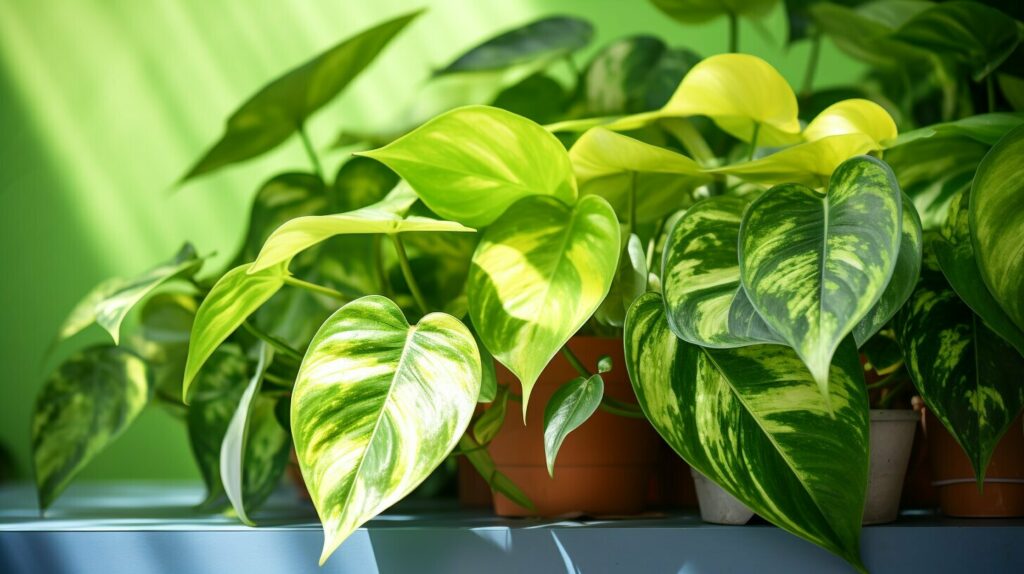
When it comes to adding greenery to your home, Pothos is a popular choice. With its vibrant leaves and trailing vines, it can bring a touch of nature indoors. However, it’s important to be aware that Pothos is toxic to both pets and children if ingested. The leaves of this plant contain calcium oxalate crystals, which can cause irritation and swelling in the mouth and throat.
To ensure the safety of your loved ones, it’s crucial to keep Pothos out of reach. Placing it in hanging baskets or on high shelves can prevent curious pets and children from accessing it. Additionally, it’s important to educate your family members about the potential risks of consuming Pothos leaves.
Key Points:
- Pothos is toxic if ingested by pets and children.
- The leaves contain calcium oxalate crystals that can cause mouth and throat irritation.
- Keep Pothos out of reach by placing it in hanging baskets or high shelves.
- Teach your family members about the potential risks of consuming Pothos leaves.
- Wash your hands after handling Pothos to prevent skin irritation.
Sago Palm – A Classical Beauty with Hidden Dangers

When it comes to adding a touch of tropical elegance to your home, the Sago Palm is a popular choice. Its graceful fronds and striking appearance make it a classical beauty that can transform your living space. However, it is important to be aware that the Sago Palm is a poisonous houseplant, and its allure comes with hidden dangers, especially for pets and children.
All parts of the Sago Palm, including the seeds and roots, are toxic when ingested. Consumption of this plant can lead to symptoms such as vomiting, diarrhea, and, in severe cases, liver failure. To keep your loved ones safe, it is crucial to place the Sago Palm out of reach, especially from curious pets and children who may be tempted to explore their surroundings.
ZZ Plant – Low-Light Tolerant, but Toxic to Touch
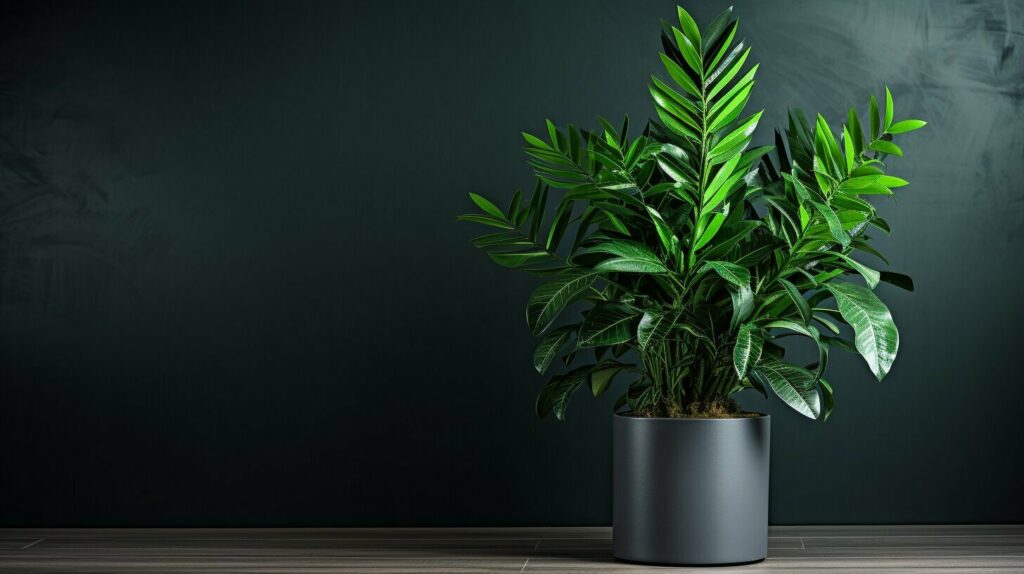
The ZZ plant is a popular choice for indoor gardening enthusiasts who are looking for a low-maintenance and visually appealing plant. With its glossy, dark green leaves and ability to thrive in low-light conditions, the ZZ plant adds a touch of beauty to any space. However, it’s important to note that all parts of the ZZ plant are toxic if ingested, making it essential to keep it out of reach of children and pets.
Not only is the ZZ plant toxic if consumed, but even touching the plant can cause skin irritation. The sap of the ZZ plant contains calcium oxalate crystals, which can cause redness, itching, and discomfort if it comes into contact with the skin. To ensure the safety of your family, it’s advisable to wear gloves when handling the ZZ plant and to wash your hands thoroughly after any contact.
Key Points:
- The ZZ plant is toxic if ingested and can cause skin irritation if touched.
- Keep the ZZ plant out of reach of children and pets to prevent accidental ingestion or contact.
- Wear gloves when handling the ZZ plant and wash hands thoroughly afterwards.
- Place the ZZ plant on high shelves or use hanging baskets to ensure its safety.
Determining Toxicity Levels of Plants
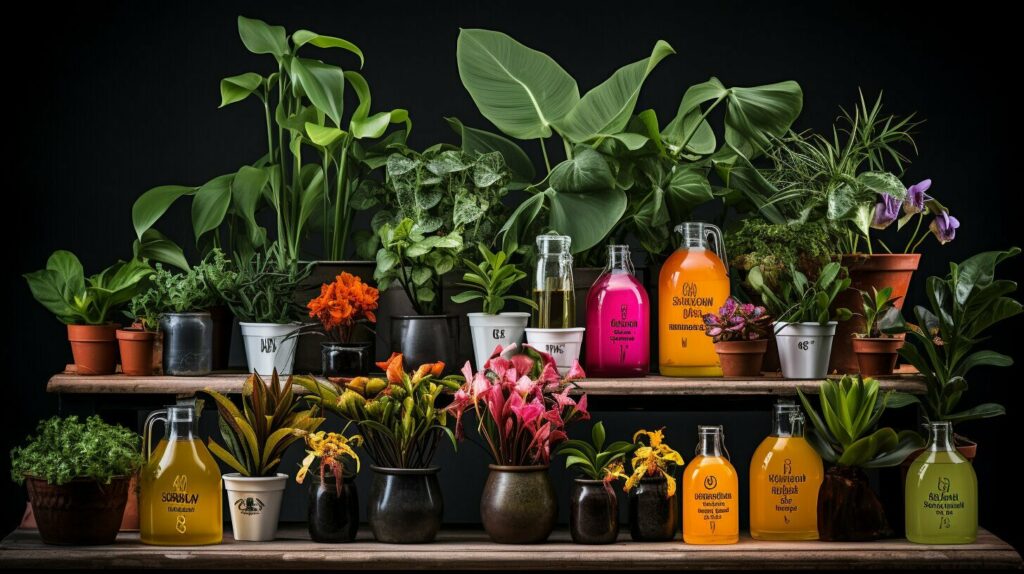
When it comes to houseplants, it’s important to understand their potential toxicity levels to ensure the safety of your family. The University of California’s Agriculture and Natural Resources department classifies plants into four toxicity levels based on the type and severity of their toxicity.
Level Four: Dermatitis
Plants classified as level four are known to cause dermatitis, which is a skin rash or irritation when exposed to the skin or mucous membranes. Examples of plants in this category include poison ivy, poison oak, and poison sumac. Contact with these plants’ chemical toxins can result in symptoms such as redness, swelling, itching, and blistering.
Level Three: Oxalates
Level three plants contain oxalates, which can cause severe irritation and burning in the mouth, throat, or skin. Some common examples of level three plants include dumb cane (Dieffenbachia), peace lily (Spathiphyllum), and philodendron. It’s crucial to prevent direct contact with these plants, especially for curious children and pets, as ingestion or skin exposure can result in discomfort and potential health risks.
Levels Two and One
Plants in levels two and one can cause gastrointestinal issues and more serious illnesses if ingested. These include plants such as Easter lilies (especially toxic to cats), hyacinths, daffodils, English ivy, and pothos. It’s important to keep these plants out of reach, especially for small children and pets who may be tempted to explore their surroundings.
By understanding these toxicity levels, you can make informed decisions about which houseplants to keep in your home and take appropriate safety measures to prevent exposure and ensure the well-being of your loved ones.
Poisonous Plants for Kids Due to Dermatitis
When it comes to plant toxicity, it’s not just ingestion that can cause harm. Some plants are known to cause skin rashes, hives, or itching, primarily due to allergic or chemical dermatitis. Examples of these plants include poison ivy, poison oak, and poison sumac. These reactions occur when the skin is exposed to the plant’s chemical toxins or as a natural allergic response.
Symptoms of dermatitis caused by these plants may include rashes, redness, swelling, and itching. It’s important to note that these reactions usually occur when spending time outdoors, such as during hikes or outdoor activities, rather than in the home environment.
To prevent exposure to plants that cause dermatitis, it’s important to educate children about the dangers of touching unknown plants and the importance of avoiding contact with plants that may cause skin irritations. When spending time outdoors, it’s advisable to wear long sleeves, long pants, and closed-toe shoes to minimize skin exposure. If contact with a potentially irritating plant occurs, washing the affected area with soap and water as soon as possible can help remove the plant’s oils and reduce the risk of a reaction.
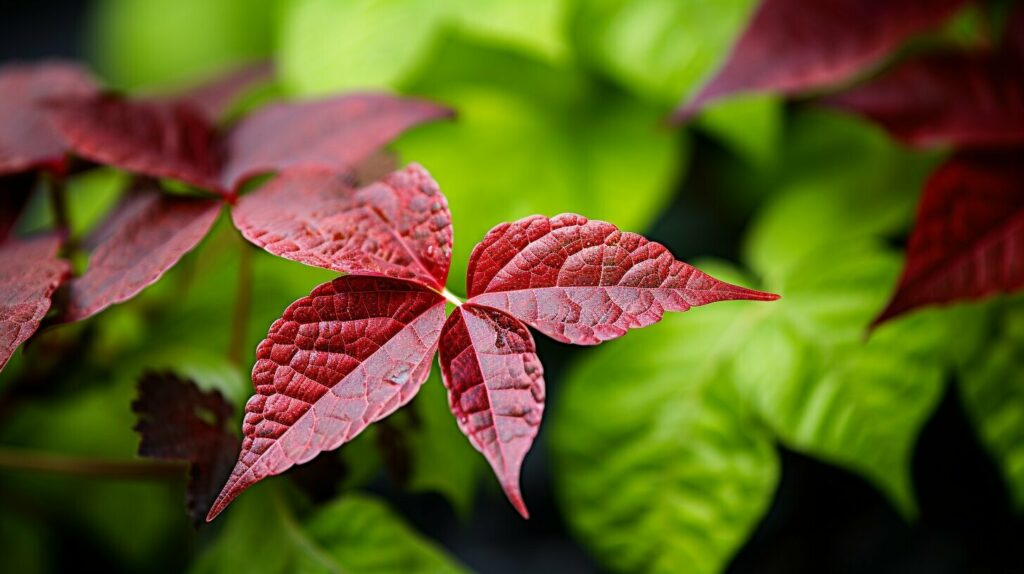
While dermatitis caused by plants can be uncomfortable and irritating, it is generally not life-threatening. However, if severe symptoms develop, such as difficulty breathing, swelling of the face or throat, or a rash that covers a large area of the body, immediate medical attention should be sought. In these cases, it may also be helpful to consult with a healthcare professional or allergist for further evaluation and guidance.
Determining Pathways to Poisoning: How Plants Can Harm Kids and Pets
When it comes to plant poisoning, it’s important to understand the different pathways through which plants can harm kids and pets. By identifying these pathways, you can take appropriate safety measures to protect your loved ones. Here are the two main pathways to consider:
Ingestion:
Ingestion is the most common pathway to plant poisoning, especially among curious children and pets. They may mistake plants for food or simply be tempted to explore their surroundings. To prevent accidental ingestion, it’s crucial to keep toxic plants out of reach. Place them on high shelves or use hanging baskets to ensure they are inaccessible to children and pets.
Skin Contact:
Some plants can cause harm through direct skin contact. This can lead to irritation, rashes, or even allergic reactions. When handling plants that may have toxic properties, such as ZZ plants or philodendrons, it’s important to take precautions. Wear gloves or wash your hands thoroughly after touching these plants to avoid any adverse skin reactions.
By being aware of these pathways to poisoning, you can create a safer environment for your family. Remember to keep toxic plants out of reach and educate your children about the potential dangers. Taking these simple precautions will allow you to enjoy the beauty of indoor plants while ensuring the well-being of your loved ones.
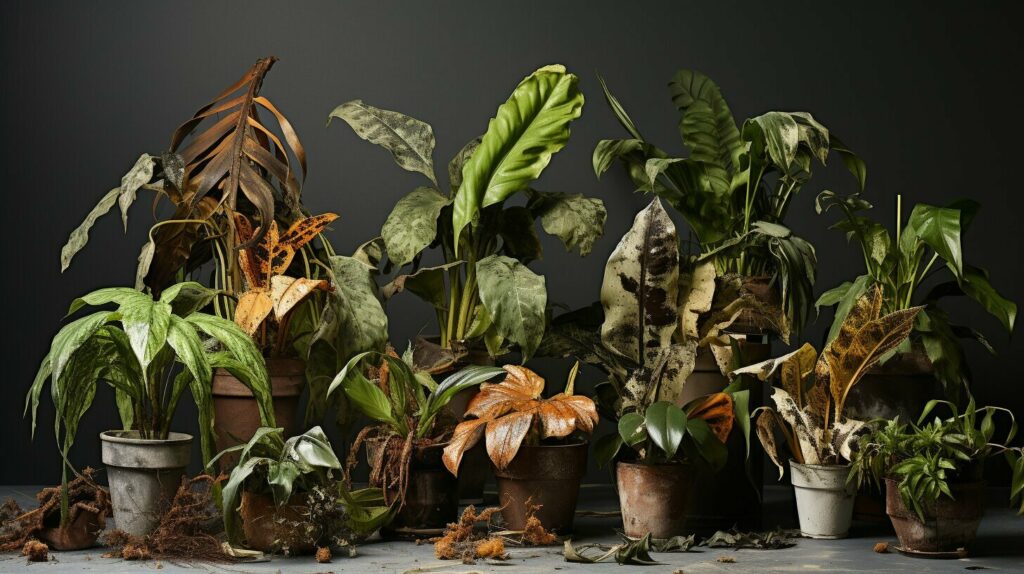
What to Do If Exposed: Immediate Actions for Plant Poisoning
If you suspect that a child or pet has been exposed to a poisonous plant, it’s essential to take immediate action. Here are the steps you should follow:
- Wash the affected skin: If the exposure was through skin contact, wash the affected area with soap and water to remove any plant residue. This will help reduce the risk of irritation or allergic reactions.
- Remove contaminated clothing: If any clothing has come into contact with the plant, remove it to prevent further exposure.
- Seek medical assistance: If the plant has been ingested or if there are any signs of adverse reactions, it is crucial to contact a medical professional or call poison control immediately. They will provide guidance and recommend the necessary steps to take.
Remember, time is of the essence when it comes to plant poisoning. Don’t hesitate to seek medical assistance if needed, as prompt action can prevent further complications. In case of emergencies, the National Capital Poison Center hotline (800-222-1222) is available 24/7 to provide immediate guidance and support.
Plant Safety Measures: Creating a Safe Environment for Your Family
When it comes to keeping your family safe from toxic houseplants, there are several plant safety measures you can implement in your home. The first step is to choose pet and child-friendly plants that are non-toxic and pose minimal risk if accidentally consumed. This way, you can enjoy the beauty of indoor greenery without worrying about potential dangers.
Another important aspect is safe placement. Keep toxic plants out of reach by placing them on high shelves or using hanging baskets. This prevents curious children and pets from accessing them. By elevating these plants, you create a barrier that reduces the risk of accidental ingestion or skin contact.
Educating your children about the potential dangers of plants is also crucial. Teach them not to put anything in their mouths that isn’t food and explain the importance of respecting plants. By fostering this awareness, you can help prevent incidents of plant poisoning in your home.
By implementing these plant safety measures, you can create a safe environment for your family without compromising on the joy of having indoor plants. So go ahead and enjoy the beauty and benefits of greenery in your home, knowing that you have taken the necessary precautions to protect your loved ones.
Disclaimer: please consult with a professional prior to making any decisions. This article is more entertainment value only. Many species of plants are known to have negative health benefits – so consult with a medical professional with any concerns and follow the FDAs guidelines.
FAQ
Are all parts of the toxic plants poisonous?
Yes, all parts of the toxic plants mentioned in this article, including leaves, stems, berries, bulbs, and roots, can be poisonous if ingested or come into contact with the skin.
Do all toxic plants pose the same level of risk?
No, the toxicity levels of plants can vary. Some plants may only cause skin irritation, while others can cause gastrointestinal issues or more serious illnesses if ingested. It’s important to be aware of the specific risks associated with each plant.
How can I keep my children and pets safe from toxic houseplants?
To keep your loved ones safe, it’s recommended to place toxic plants out of reach, such as on high shelves or using hanging baskets. Additionally, educating children about the dangers of plants and encouraging them not to put anything in their mouths that isn’t food can help prevent accidents.
What should I do if I suspect my child or pet has been exposed to a poisonous plant?
If exposure occurs, wash the affected skin with soap and water and remove any clothing that may have come into contact with the plant. In case of ingestion, it is crucial to contact a medical professional or call poison control immediately. The National Capital Poison Center hotline (800-222-1222) is available 24/7 to provide guidance in cases of plant poisoning.
Can I still enjoy indoor plants if I have children or pets?
Yes, there are many pet and child-friendly plants that are non-toxic and pose minimal risk if accidentally consumed. By implementing simple safety measures, such as placing toxic plants out of reach and choosing safe plant options, you can create a safe environment for your family while enjoying the beauty of indoor plants.

